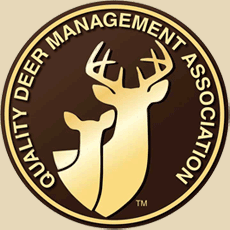After you have picked your puppy now it’s time to begin the most important part of having your dog. As one person once said; “having a dog that won’t mind is like having two wives.” Most sportsmen know how difficult that must be. So training your puppy is a critical part to a lifelong companionship.
Where to begin? It starts with positive stimulation. Puppies are all about love and pleasing their owner. Making it fun and enjoyable will speed up the learning curve of your puppy. While there are different styles and different methods, I will share here some that have worked well for me and tie in a few from others who have trained sporting dogs.
One of the most frustrating parts of owning a dog is when they won’t come when called. Teaching them to come when called is critical for safety and sanity. This is accomplished many different ways but the easiest is through play. When you first bring your puppy home, you play with him and constantly repeat your command for “come” Some handlers like to use their name as their “come” command. And others will use a series of whistles or the word itself. Whatever you decide, be consistent. Frolicking and playing and repeatedly saying your command will instill in your puppy early that this command generates a positive response. The positive response is pleasing his handler. It is our responsibility to provide positive reinforcement every time the puppy responds to your command. This cannot be stressed enough. The puppy is responding to the positive response or praise at first. Later they will associate the command with their behavior and to the positive response.
As you begin to get a more consistent response to the ‘come’ command. Now it is time to introduce other basic obedience commands. The most common used in sporting activities in addition to the ‘come’ command are ‘sit’, ‘stay’, ‘whoa’, ‘fetch’ and ‘heel’. While there are others that are used for different situations and for what you use your dog for, these are pretty common and are universal.
In order the ones I begin to introduce after the ‘come’ command are; ‘sit’ and ‘stay’. These two illicit control over your dog and are a must as you begin to take them into a more public arena or into the field and need to get them under control.
The ‘sit’ command is fairly easy to incorporate into the ‘come’ command. Once your puppy begins to understand that when you call them, they are to come to you, now when they arrive you simply, place one hand under their chest, and one on their rump and while lifting on one hand you push on the other while saying; ‘sit’ in a clear and crisp voice. Once the puppy sits, now you provide positive reinforcement with a lot of petting and loving. By doing this every time the puppy comes when you call, they will soon learn that when they come when called they are supposed to sit and you will not need the sit command because they will incorporate it into the ‘come’ command.
The last of the obedience commands that I deem as critical is the ‘stay’ command. As your puppy is introduced to more and more situations, being able to keep the dog in one place with a command will keep friends. Nothing is more frustrating than being with someone who has a dog they cannot control and is running all over the field, jumping on people and making a mess of a hunt. The stay command is a little difficult because you have been teaching the puppy to come on command now you are teaching them not to come on command. This must be taught in small increments. Once the puppy is sitting. Turn and face your puppy, holding your hand in front of his face, say in a strong voice ‘stay’ and start to back away while repeating the word. Move approximately five feet away kneel down and now call your dog to you. When he comes give him a lot of positive reinforcement. Repeat this several times. As your puppy gets used to the command, start to move further and further while repeating the command. Within a few days, you should be able to turn your back walk twenty or so yards and then give the ‘come’ command.
If there is nothing more you learn from this it is that training a new puppy takes a lot of patience. The puppy wants nothing more than to please you so you use this to your advantage and encourage that behavior. Take fifteen to twenty minutes a day to reinforce the lessons of each day and you will be able to grow rapidly on the lessons of the previous day.
Training a puppy is rewarding and lifelong. As your dog grows and your companionship lingers, the time you spend as a puppy will pay huge rewards and make the time you spend with your puppy worthwhile.




